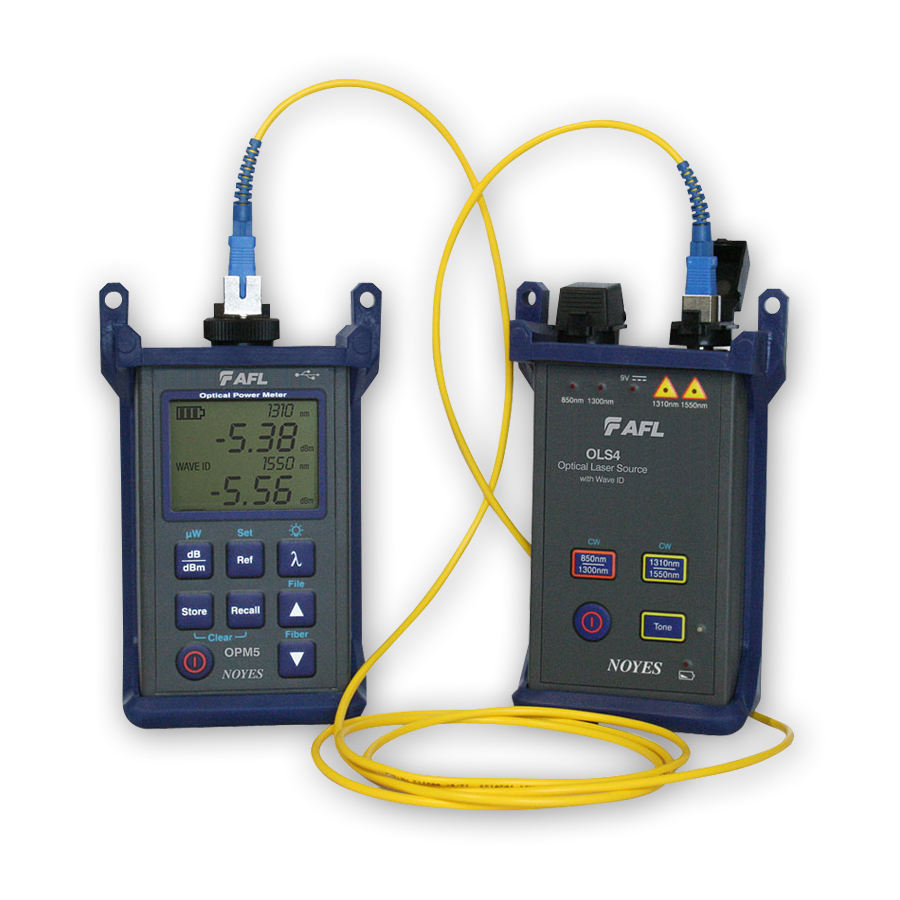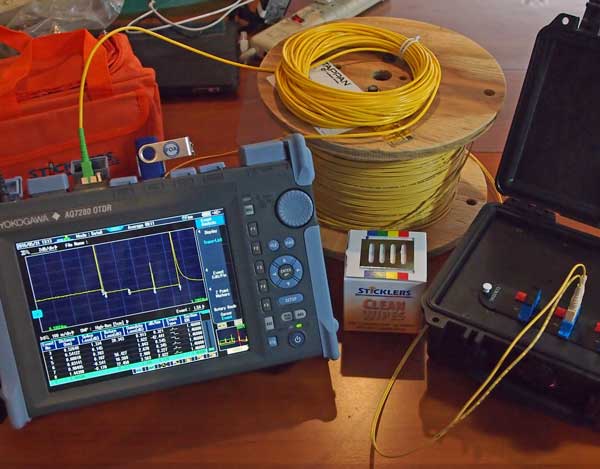FAQs about fibre testing equipment in fiber optic maintenance
Recognizing Exactly How an Optical Measurement System Boosts Precision in Industrial Applications
Optical measurement systems play an essential function in enhancing precision across different industrial applications. By leveraging innovative innovations such as laser interferometry and 3D imaging sensors, these systems offer high-resolution, non-contact dimensions. This capacity minimizes the danger of damaging sensitive components while guaranteeing accuracy. Nonetheless, the effect of these systems prolongs beyond simple measurements. Exploring their benefits, applications, and future fads exposes a complicated landscape of development and challenges that benefits closer assessment.
The Fundamentals of Optical Measurement Systems
Optical measurement systems function as crucial tools in numerous industrial applications, providing specific data collection and evaluation. These systems utilize light as a main means of measurement, leveraging optical concepts to examine dimensions, positions, and surface characteristics of objects. They incorporate elements such as lasers, cameras, and sensing units, which collaborate to record high-resolution pictures and information.
The innovation enables non-contact dimensions, minimizing the danger of damaging delicate components. Optical measurement systems are flexible, finding energy in quality assurance, setting up confirmation, and dimensional evaluation across different industries. They are particularly efficient in environments where traditional measurement methods might fail, such as measuring complicated geometries or observing quick movements.
As sectors remain to progress, the combination of optical measurement systems will remain important for guaranteeing accuracy and efficiency, ultimately improving product quality and functional productivity in different making procedures.
Key Technologies Behind Optical Measurement
Trick modern technologies such as laser interferometry strategies and 3D imaging sensing units play an essential duty in the effectiveness of optical measurement systems (optical measurement system). These technologies make it possible for specific measurements and thorough analysis in different industrial applications. Recognizing their performances is important for using the complete possibility of optical measurement systems
Laser Interferometry Techniques
Countless laser interferometry techniques have actually revolutionized the field of optical measurement, using extraordinary accuracy and precision in numerous commercial applications. These techniques utilize the disturbance of coherent light waves to measure distance, variation, and surface area abnormalities with nanometer-level precision. Typical methods include Michelson interferometry, which splits a beam and analyzes stage changes, and Fabry-Pérot interferometry, understood for its high resolution in determining tiny modifications. Additionally, laser Doppler interferometry utilizes regularity shifts to examine speed, making it important in dynamic dimensions. The flexibility of these methods permits their integration into varied production procedures, enhancing high quality control and making certain adherence to stringent resistances. Consequently, laser interferometry proceeds to play a crucial function in advancing commercial measurement requirements.
3D Imaging Sensors
Improvements in measurement technology have actually caused the development of 3D imaging sensing units, which play a significant role in optical measurement systems. These sensors catch three-dimensional data via different methods such as triangulation, time-of-flight, and organized light. By properly rebuilding the shape and measurements of objects, 3D imaging sensors improve the accuracy of dimensions in commercial applications. They provide real-time comments, helping with quality assurance and making certain that elements meet strict specifications. In addition, their capability to run in tough environments, such as varying lights problems, makes them invaluable in making processes. As industries increasingly adopt automation, the integration of 3D imaging sensors into optical measurement systems is anticipated to drive additional enhancements in efficiency and precision.
Benefits of Optical Measurement in Industry
Although typical measurement techniques have actually long been the criterion in commercial settings, optical measurement systems use substantial advantages that enhance precision and performance. These systems utilize light to record data, causing high-resolution dimensions that are usually unattainable with standard techniques. The non-contact nature of optical measurements minimizes the risk of damaging delicate elements during the assessment procedure. In addition, the speed of optical measurements enables rapid data acquisition, helping with prompt decision-making in fast-paced industrial atmospheres.
Optical systems are versatile, capable of determining numerous materials and shapes without the requirement for comprehensive recalibration. This convenience adds to enhanced process and performance. In addition, the automation capacity of optical measurement systems lessens human error, making sure constant high quality control. On the whole, the combination of optical measurement innovation represents a progressive shift in the direction of boosted precision and integrity in commercial procedures, ultimately bring about enhanced item high quality and functional efficiency.
Applications of Optical Measurement Systems

Optical measurement systems play a pivotal role in enhancing manufacturing procedure optimization by giving accurate data for decision-making. These systems ensure high quality control guarantee via real-time tracking and analysis of production metrics. As sectors progressively embrace these technologies, their influence on efficiency and item reliability ends up being evident.
Production Process Optimization
Enhancing manufacturing procedure efficiency is progressively reliant on the assimilation of optical measurement systems. These systems give real-time data on various specifications, permitting suppliers to evaluate procedures with a high degree of precision. By making it possible for precise dimensions of measurements, surface qualities, and material properties, optical measurement systems facilitate the recognition of ineffectiveness and traffic jams in manufacturing lines. The prompt feedback from these systems empowers engineers to make informed choices, bring about maximized machining, setting up, and ending up processes. Additionally, the capacity to check problems constantly permits for flexible adjustments, minimizing downtime and waste. As markets go for greater performance and decreased functional expenses, optical measurement systems arise as critical devices for improving production procedure optimization.

Quality Assurance Assurance
The integration of optical measurement systems significantly impacts quality control guarantee in commercial settings. These systems offer specific and non-destructive dimensions, allowing producers to detect flaws and variances early in the manufacturing process. By using advanced imaging techniques, such as laser triangulation and interferometry, optical measurement systems ensure that elements satisfy stringent specifications. This facilitates real-time monitoring, lowering waste and lessening the risk of defective products getting to the marketplace. Additionally, the information accumulated can be evaluated to refine production processes even more, leading to constant renovation. Ultimately, the adoption of optical measurement systems enhances reliability and consistency in quality assurance, promoting higher confidence among stakeholders and customers alike in the end products provided.
Situation Researches: Successful Applications
Numerous sectors have actually efficiently integrated optical measurement my latest blog post systems to improve their functional performance and product quality. In the automotive market, a popular maker took on a laser triangulation system to keep track of the alignment of vehicle components. This implementation content significantly decreased setting up mistakes, resulting in boosted security and decreased expenses.
In the aerospace market, a leading airplane supplier utilized optical metrology for precision dimensions of wind turbine blades, attaining a reduction in producing tolerances and far better performance standards.
A consumer electronic devices firm implemented optical measurement technology throughout the manufacturing of smart device screens, resulting in improved high quality control and a decrease in faulty items.
These study illustrate how optical measurement systems not just enhance precision yet additionally add to general operational performance, demonstrating their worth across different industries. By addressing certain requirements, these systems have actually proven to be important tools in contemporary commercial applications.
Obstacles and Limitations of Optical Measurement
While optical measurement systems use considerable advantages in different industrial applications, they are not without their challenges and constraints. One significant worry is level of sensitivity to environmental problems, such as temperature fluctuations, humidity, and dirt, which can detrimentally affect measurement accuracy. Additionally, optical systems usually need exact placement and calibration, making them vulnerable to human error during arrangement and operation. Another limitation is the possibility for disturbance from ambient light, which can misshape measurements and demand intricate filtering system techniques. Particular materials and surface areas might present difficulties, as reflective or clear characteristics can lead to irregular readings. The cost of high-grade optical elements and systems can also be a barrier for some markets, restricting prevalent fostering. Lastly, specialized training is commonly needed for personnel to successfully operate and maintain these systems, contributing to the total intricacy and operational obstacles.
Future Fads in Optical Measurement Innovation
As developments in modern technology proceed to shape industrial procedures, the future of optical measurement systems is positioned for considerable development. Emerging fads show a shift towards improved integration of expert system and machine knowing, allowing systems to assess data in real-time, identify patterns, and boost decision-making procedures. Furthermore, the development of miniaturized sensors and advanced optics is anticipated to bring about even more small and functional measurement solutions, making them obtainable for a broader series of applications.
Furthermore, the consolidation of 3D imaging and high-resolution capacities will certainly permit extraordinary accuracy in measurements, which is necessary for industries such as aerospace and automobile. The promote automation and Market 4.0 will certainly also drive the demand for optical measurement systems that can easily interface with other modern technologies. As these fads unravel, why not find out more optical measurement systems will likely come to be indispensable to attaining greater effectiveness and precision throughout numerous industrial sectors.

Often Asked Inquiries
Exactly How Do Optical Measurement Systems Contrast to Standard Measurement Approaches?
Optical measurement systems offer better precision and rate contrasted to typical approaches - fibre testing equipment. They minimize human mistake, boost data collection performance, and provide real-time results, making them increasingly chose in numerous commercial applications for exact measurements
What Industries Benefit one of the most From Optical Measurement Systems?
Optical measurement systems significantly profit markets such as aerospace, automotive, and electronic devices. Their capability to give high-precision dimensions improves quality assurance, reduces manufacturing errors, and improves total performance, making them necessary in affordable production environments.
Can Optical Measurement Systems Be Customized for Specific Applications?
Optical measurement systems can undoubtedly be tailored for certain applications. By adjusting specifications such as wavelength, resolution, and calibration techniques, industries can tailor these systems to satisfy special accuracy and precision demands properly.
What Is the Maintenance Requirement for Optical Measurement Systems?
The upkeep requirements for optical measurement systems commonly consist of regular calibration, cleaning of optical parts, and software application updates. Sticking to these practices assurances accuracy, integrity, and longevity of the measurement devices in various applications.
Exactly How Do Environmental Variables Impact Optical Measurement Precision?
Ecological aspects, such as temperature level variations, humidity, and dust, considerably influence optical measurement precision. These aspects can distort light courses and disrupt sensor analyses, inevitably endangering the dependability and precision of dimensions in commercial setups.